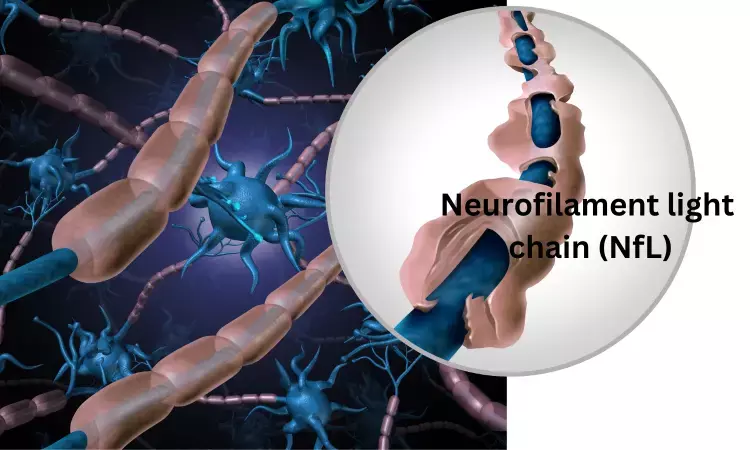- Home
- Medical news & Guidelines
- Anesthesiology
- Cardiology and CTVS
- Critical Care
- Dentistry
- Dermatology
- Diabetes and Endocrinology
- ENT
- Gastroenterology
- Medicine
- Nephrology
- Neurology
- Obstretics-Gynaecology
- Oncology
- Ophthalmology
- Orthopaedics
- Pediatrics-Neonatology
- Psychiatry
- Pulmonology
- Radiology
- Surgery
- Urology
- Laboratory Medicine
- Diet
- Nursing
- Paramedical
- Physiotherapy
- Health news
- Fact Check
- Bone Health Fact Check
- Brain Health Fact Check
- Cancer Related Fact Check
- Child Care Fact Check
- Dental and oral health fact check
- Diabetes and metabolic health fact check
- Diet and Nutrition Fact Check
- Eye and ENT Care Fact Check
- Fitness fact check
- Gut health fact check
- Heart health fact check
- Kidney health fact check
- Medical education fact check
- Men's health fact check
- Respiratory fact check
- Skin and hair care fact check
- Vaccine and Immunization fact check
- Women's health fact check
- AYUSH
- State News
- Andaman and Nicobar Islands
- Andhra Pradesh
- Arunachal Pradesh
- Assam
- Bihar
- Chandigarh
- Chattisgarh
- Dadra and Nagar Haveli
- Daman and Diu
- Delhi
- Goa
- Gujarat
- Haryana
- Himachal Pradesh
- Jammu & Kashmir
- Jharkhand
- Karnataka
- Kerala
- Ladakh
- Lakshadweep
- Madhya Pradesh
- Maharashtra
- Manipur
- Meghalaya
- Mizoram
- Nagaland
- Odisha
- Puducherry
- Punjab
- Rajasthan
- Sikkim
- Tamil Nadu
- Telangana
- Tripura
- Uttar Pradesh
- Uttrakhand
- West Bengal
- Medical Education
- Industry
Blood neurofilament light chain level early diagnostic marker for Multiple Sclerosis: JAMA

Multiple sclerosis (MS) is the most common disabling neurological disease of young adults with symptom onset generally occurring between the ages of 20 to 40 years leading to disability however mechanisms contributing to disability accumulation in multiple sclerosis (MS) are poorly understood.
Blood neurofilament light chain (NfL) level, a marker of neuroaxonal injury, is known to be associated with disease activity in people with MS however, data on the association between NfL level and disability accumulation have been conflicting.
A recent cohort study including 1899 individuals reveals that serum neurofilament light chain elevation, was a sign of accelerated neuroaxonal injury, and was detected approximately 1 year preceding disability worsening events associated with relapses and 1 to 2 years before worsening events independent of clinical relapses. The study findings are published in JAMA Neurology.
The current study included 2 observational cohorts: results from the Expression, Proteomics, Imaging, Clinical (EPIC) study at the University of California San Francisco (since 2004) were confirmed in the Swiss Multiple Sclerosis Cohort (SMSC), a multicenter study in 8 centers since 2012. The study included 2 observational cohorts in tertiary MS centers. All participants of both cohorts with available NfL results were included in the study, and no eligible participants were excluded or declined to participate.
Researchers used CDW and defined as Expanded Disability Status Scale (EDSS) worsening that was confirmed after 6 or more months and classified into CDW associated with clinical relapses (CDW-R) or independent of clinical relapses (CDW-NR). Visits were classified in relation to the disability worsening events into CDW(−2) for 2 visits preceding event, CDW(−1) for directly preceding event, CDW(event) for first diagnosis of EDSS increase, and the confirmation visit. Mixed linear and Cox regression models were used to evaluate NfL dynamics and to assess the association of NfL with future CDW, respectively.
The key findings of the study are
• A total of 3906 EPIC visits (609 participants; median age, 42.0 years; female [69.6%]) and 8901 SMSC visits (1290 participants; median age, 41.2 years; 850 female [65.9%]) were included.
• In CDW-R (EPIC, 36 events; SMSC, 93 events), NfL z scores were 0.71 (95% CI, 0.35-1.07; P < .001) units higher at CDW-R(−1) in EPIC and 0.32 (95% CI, 0.14-0.49; P < .001) in SMSC compared with stable MS samples.
• NfL elevation could be detected preceding CDW-NR (EPIC, 191 events; SMSC, 342 events) at CDW-NR(−2) (EPIC: 0.23; 95% CI, 0.01-0.45; P = .04; SMSC: 0.28; 95% CI, 0.18-0.37; P < .001) and at CDW-NR(−1) (EPIC: 0.27; 95% CI, 0.11-0.44; P < .001; SMSC: 0.09; 95% CI, 0-0.18; P = .06).
• Those findings were replicated in the subgroup with relapsing-remitting MS. Time-to-event analysis confirmed the association between NfL levels and future CDW-R within approximately 1 year and CDW-NR (in approximately 1-2 years).
Researchers concluded that “This cohort study documents the occurrence of NfL elevation in advance of clinical worsening and may hint to a potential window of ongoing dynamic central nervous system pathology that precedes the diagnosis of CDW.”
Reference: Abdelhak A, Benkert P, Schaedelin S, et al. Neurofilament Light Chain Elevation and Disability Progression in Multiple Sclerosis. JAMA Neurol. Published online November 06, 2023. doi:10.1001/jamaneurol.2023.3997
MSc. Neuroscience
Niveditha Subramani a MSc. Neuroscience (Faculty of Medicine) graduate from University of Madras, Chennai. Ambitious in Neuro research having worked in motor diseases and neuron apoptosis is interested in more of new upcoming research and their advancement in field of medicine. She has an engrossed skill towards writing and her roles at Medical dialogue include Sr. Content writer. Her news covers new discoveries and updates in field of medicine. She can be reached at editorial@medicaldialogues.in
Dr Kamal Kant Kohli-MBBS, DTCD- a chest specialist with more than 30 years of practice and a flair for writing clinical articles, Dr Kamal Kant Kohli joined Medical Dialogues as a Chief Editor of Medical News. Besides writing articles, as an editor, he proofreads and verifies all the medical content published on Medical Dialogues including those coming from journals, studies,medical conferences,guidelines etc. Email: drkohli@medicaldialogues.in. Contact no. 011-43720751


